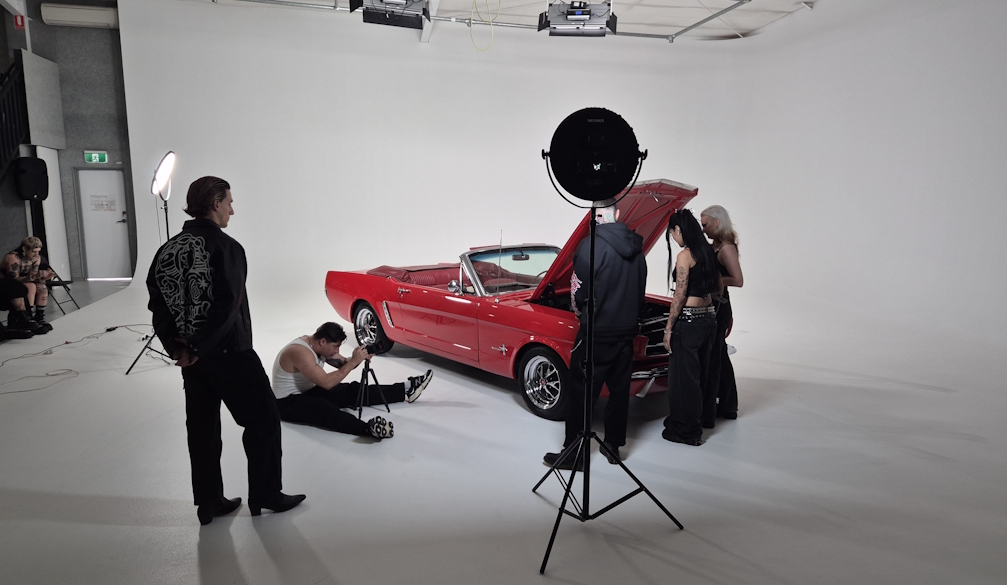Antisemitism goes beyond overt acts of hate – subtle forms of bias take their toll, too
- Written by Mareike Riedel, Senior lecturer in law, Macquarie University

The dramatic rise in antisemitic incidents has dominated headlines in Australia in recent months, with calls for urgent action to address what many are calling a crisis[1].
The Executive Council of Australian Jewry tallied[2] more than 2,000 antisemitic incidents in 2024, including physical assaults, attacks on synagogues, vandalism and graffiti. This is a 316% increase over the previous year.
These alarming events have sparked a heated political debate, with the opposition accusing[3] the federal government of not taking the issue seriously enough.
However, focusing only on overt acts of antisemitism risks seeing it as an exceptional phenomenon or a problem limited to fringe extremist groups. This can obscure the more subtle and structural forms of antisemitism that perpetuate stereotypes about Jews and entrench discrimination in society.
How laws ingrain structural antisemitism
In my research[4], I examine how certain forms of antisemitism persist in Western societies with a Christian tradition.
While laws explicitly targeting Jews are largely a relic of the past, subtler forms of exclusion and discrimination remain. These often stem from perceptions that Jews deviate from dominant cultural norms.
For instance, Jewish communities frequently encounter resistance to the building of an eruv[5]. This is a symbolic demarcation of a public space that enables Jews to observe Shabbat, a day when work is prohibited. It can sometimes involve stringing a wire between poles to create a boundary where people can do things they aren’t normally able to do, such as push a pram or carry shopping bags.
When an Orthodox Jewish community in Sydney sought permission to construct an eruv in the 2010s, local residents opposed[6] it. Many arguments invoked[7] stereotypes of Jews as clannish, intrusive and conspiratorial.
There have been similar disputes over eruvs in the United Kingdom[8], Canada[9] and the United States[10]. In many cases, local councils have sided with opponents, meaning Orthodox Jewish communities have had to go to court to seek approval.
In Europe, bans on religious slaughter have also singled out[11] Jews and Muslims as cruel and fundamentalist, despite the widespread use of factory farming in Western societies.
There have also been calls to outlaw[12] infant male circumcision[13] in the name of children’s rights in many European countries and parts of the US.
These campaigns have, at times, tapped into longstanding antisemitic ideas about Jews as barbaric[14], bloodthirsty[15] and backward[16].
These legal conflicts or campaigns reveal the structural dimensions of antisemitism. Similar to other forms of structural racism[17], structural antisemitism normalises majoritarian norms, perceptions and practices.
In turn, it marginalises and denigrates Jews as foreign, threatening and a problematic “other”.
Institutions, including schools, workplaces and local councils, can perpetuate these biases when they legitimise such exclusionary norms without critical reflection.
Read more: The long, dark history of antisemitism in Australia[18]
Challenging majority cultural norms
Understanding structural antisemitism also requires examining the Christian heritage of Western societies. In particular, there is a need to reflect on the legacy of Christian anti-Judaism[19].
Historically, the Christian belief in “supersessionism[20]” referred to idea that Christianity has superseded Judaism and that Christians have replaced Jews as the people of God. Alongside the stereotype of Jews as the killers of Christ[21], this belief has contributed to stereotypes[22] of Jews as inferior to Christians and being archaic, unenlightened, exclusive and ritualistic.
As the legal conflicts over eruvs, religious slaughter and circumcision suggest, such views continue to subtly influence attitudes towards Jews, even in modern secular societies.
For example, popular references to Judeo-Christian values[23] signal the equality of Jews and Christians in society. However, this glosses over the fact that the acceptance of Jews can be contingent on conforming with majority norms.
This legacy also normalises Christian privilege[24]. While Christians may face discrimination in certain contexts, they also enjoy inherent advantages in societies shaped by Christian traditions.
National calendars[25], weekly rhythms and public holidays align with Christian practices, while minorities need to seek accommodations to observe their own traditions[26].
For example, Western cities are filled with Christian symbols, such as churches and annual Christmas decorations. Several Australian parliaments[27] and local councils[28] also still begin meetings with Christian prayers.
What might seem like benign cultural traditions can signal exclusion[29] to minority communities, including Jews. Implicit Christian norms can also create pressure to assimilate, especially given the long history of Christian societies’ attempts to convert[30] or assimilate Jews.
However, these dynamics are rarely acknowledged in public debates about the discrimination of Jews and can also fly under the radar of the law.
In 1998, for instance, a Jewish father in New South Wales brought racial discrimination complaints against the education department over Christian activities at his children’s public school. These included nativity plays, Christmas carols and exchanging Easter eggs. The complaints were dismissed[31] because they did not constitute discrimination on the basis of race.
The law in NSW does not prohibit religious discrimination (although the state now has religious vilification laws[32]).
This gap exists in federal discrimination law[33], as well. It leaves minority religious groups with limited legal options to challenge the dominance of Christian norms. The NSW example demonstrates this and suggests there may be a case for a new federal religious discrimination law.
The question of what constitutes antisemitism remains a vexed question[34], including among Jews[35]. Violent antisemitic attacks demand urgent attention. Yet, public discussions of antisemitism must also address these subtler forms of exclusion and the structural dimensions of antisemitism.
References
- ^ crisis (aijac.org.au)
- ^ tallied (www.ecaj.org.au)
- ^ accusing (www.theaustralian.com.au)
- ^ research (www.cambridge.org)
- ^ eruv (www.myjewishlearning.com)
- ^ opposed (www.governmentnews.com.au)
- ^ invoked (www.cambridge.org)
- ^ United Kingdom (www.standard.co.uk)
- ^ Canada (www.theglobeandmail.com)
- ^ the United States (forward.com)
- ^ singled out (www.politico.eu)
- ^ outlaw (www.independent.co.uk)
- ^ male circumcision (www.dw.com)
- ^ barbaric (www.independent.co.uk)
- ^ bloodthirsty (www.tabletmag.com)
- ^ backward (jewishreviewofbooks.com)
- ^ structural racism (theconversation.com)
- ^ The long, dark history of antisemitism in Australia (theconversation.com)
- ^ Christian anti-Judaism (reviews.history.ac.uk)
- ^ supersessionism (www.bibleodyssey.com)
- ^ stereotype of Jews as the killers of Christ (www.ajc.org)
- ^ contributed to stereotypes (link.springer.com)
- ^ Judeo-Christian values (www.abc.net.au)
- ^ Christian privilege (womenintheology.org)
- ^ calendars (theconversation.com)
- ^ traditions (theconversation.com)
- ^ parliaments (www.theguardian.com)
- ^ local councils (theconversation.com)
- ^ signal exclusion (theconversation.com)
- ^ convert (theconversation.com)
- ^ dismissed (www.austlii.edu.au)
- ^ religious vilification laws (www.nsw.gov.au)
- ^ federal discrimination law (theconversation.com)
- ^ vexed question (theconversation.com)
- ^ including among Jews (www.tandfonline.com)

















